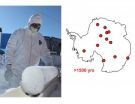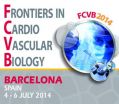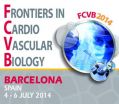'Nanojuice' could improve how doctors examine the gut
It may help diagnose irritable bowel syndrome, celiac disease, Crohn’s disease and other gastrointestinal illnesses
2014-07-06
(Press-News.org) BUFFALO, N.Y. – Located deep in the human gut, the small intestine is not easy to examine. X-rays, MRIs and ultrasound images provide snapshots but each suffers limitations.
Help is on the way.
University at Buffalo researchers are developing a new imaging technique involving nanoparticles suspended in liquid to form "nanojuice" that patients would drink. Upon reaching the small intestine, doctors would strike the nanoparticles with a harmless laser light, providing an unparalleled, non-invasive, real-time view of the organ.
Described July 6 in the journal Nature Nanotechnology, the advancement could help doctors better identify, understand and treat gastrointestinal ailments.
"Conventional imaging methods show the organ and blockages, but this method allows you to see how the small intestine operates in real time," said corresponding author Jonathan Lovell, PhD, UB assistant professor of biomedical engineering. "Better imaging will improve our understanding of these diseases and allow doctors to more effectively care for people suffering from them."
The average human small intestine is roughly 23 feet long and 1 inch thick. Sandwiched between the stomach and large intestine, it is where much of the digestion and absorption of food takes place. It is also where symptoms of irritable bowel syndrome, celiac disease, Crohn's disease and other gastrointestinal illnesses occur.
To assess the organ, doctors typically require patients to drink a thick, chalky liquid called barium. Doctors then use X-rays, magnetic resonance imaging and ultrasounds to assess the organ, but these techniques are limited with respect to safety, accessibility and lack of adequate contrast, respectively.
Also, none are highly effective at providing real-time imaging of movement such as peristalsis, which is the contraction of muscles that propels food through the small intestine. Dysfunction of these movements may be linked to the previously mentioned illnesses, as well as side effects of thyroid disorders, diabetes and Parkinson's disease.
Lovell and a team of researchers worked with a family of dyes called naphthalcyanines. These small molecules absorb large portions of light in the near-infrared spectrum, which is the ideal range for biological contrast agents.
They are unsuitable for the human body, however, because they don't disperse in liquid and they can be absorbed from the intestine into the blood stream.
To address these problems, the researchers formed nanoparticles called "nanonaps" that contain the colorful dye molecules and added the abilities to disperse in liquid and move safely through the intestine.
In laboratory experiments performed with mice, the researchers administered the nanojuice orally. They then used photoacoustic tomography (PAT), which is pulsed laser lights that generate pressure waves that, when measured, provide a real-time and more nuanced view of the small intestine.
The researchers plan to continue to refine the technique for human trials, and move into other areas of the gastrointestinal tract.
INFORMATION:
Additional authors of the study come from UB's Department of Chemical and Biological Engineering, Pohang University of Science and Technology in Korea, Roswell Park Cancer Institute in Buffalo, the University of Wisconsin-Madison, and McMaster University in Canada.
The research was supported by grants from the National Institutes of Health, the Department of Defense and the Korean Ministry of Science, ICT and Future Planning.
ELSE PRESS RELEASES FROM THIS DATE:
Discovery provides insights on how plants respond to elevated CO2 levels
2014-07-06
Biologists at UC San Diego have solved a long-standing mystery concerning the way plants reduce the numbers of their breathing pores in response to rising carbon dioxide levels in the atmosphere.
In a paper published in this week's early online edition of Nature, they report the discovery of a new genetic pathway in plants, made up of four genes from three different gene families that control the density of breathing pores—or "stomata"—in plant leaves in response to elevated CO2 levels.
Their discovery should help biologists better understand how the steadily increasing ...
Rewriting the history of volcanic forcing during the past 2,000 years
2014-07-06
RENO – A team of scientists led by Michael Sigl and Joe McConnell of Nevada's Desert Research Institute (DRI) has completed the most accurate and precise reconstruction to date of historic volcanic sulfate emissions in the Southern Hemisphere.
The new record, described in a manuscript published today in the online edition of Nature Climate Change, is derived from a large number of individual ice cores collected at various locations across Antarctica and is the first annually resolved record extending through the Common Era (the last 2,000 years of human history).
"This ...
Global toolkit to diagnose menopause
2014-07-06
Created at Monash University, the world's first toolkit is designed for GPs to use with women from the age of 40. Thought to be the first of its kind, researchers say the toolkit has the potential to help manage menopausal conditions for women globally.
The Practitioner Toolkit for Managing the Menopause, which includes a diagnostic tool, as well as a compendium of approved hormone therapies, is published today in the journal, Climacteric.
Led by Professor Susan Davis, the research team from the School of Public Health and Preventative Medicine, combined existing research ...
The Lancet: Sierra Leone researchers call for improved health surveillance and communication around Ebola crisis
2014-07-05
Researchers working in Sierra Leone today [Saturday 5 July] suggest priority actions needed to tackle the ongoing Ebola crisis in West Africa. In a letter to The Lancet, the researchers call for improvements in access to diagnostic technologies and health-care resources, as well as improved disease surveillance and health communication.
At present, there is little incentive for patients to seek professional diagnosis of suspected Ebola, say the authors, with most people with febrile (fever-causing) illnesses in Sierra Leone treated at home, and the true extent of the ...
The Lancet: New trial suggests cheaper drugs for common heart attack procedure could improve outcomes and save health budgets millions
2014-07-05
A new study published in The Lancet compares outcomes for two drugs used to prevent blood clot formation during emergency heart attack treatment. The study suggests that use of one of the drugs, heparin, could result in improved outcomes (such as a reduced rate of repeat heart attacks), compared to the other drug tested, bivalirudin, which is in widespread use in high-income countries, and is around 400 times more expensive than heparin.
The results of the HEAT-PPCI trial suggest that systematic use of heparin rather than bivalirudin after primary percutaneous coronary ...
Association found between high cholesterol and breast cancer
2014-07-04
This news release is available in Spanish.
Barcelona, 4 July 2014: An association between high blood cholesterol and breast cancer has been found in a study of more than 1 million patients over a 14 year time period in the UK. The research will be presented today at Frontiers in CardioVascular Biology (FCVB) 2014 in Barcelona, Spain. The meeting is organised by the Council on Basic Cardiovascular Science of the European Society of Cardiology (ESC) in collaboration with 13 European cardiovascular science societies.
http://spo.escardio.org/SessionDetails.aspx?eevtid=65&sessId=13301&subSessId=3494
Dr ...
First evidence for painless atrial fibrillation treatment
2014-07-04
Barcelona, 4 July 2014: The first evidence for a shockless treatment for atrial fibrillation (AF) will be presented today at Frontiers in CardioVascular Biology (FCVB) 2014 in Barcelona, Spain. The meeting is organised by the Council on Basic Cardiovascular Science of the European Society of Cardiology (ESC) in collaboration with 13 European cardiovascular science societies. http://spo.escardio.org/SessionDetails.aspx?eevtid=65&sessId=13104
Dr Brian O. Bingen, first author, said: "AF is the most common cardiac arrhythmia. Symptoms range from the feeling of fish flapping ...
Effects of conflict on women's reproductive health need to be managed sensitively
2014-07-04
Clinicians need to be sensitive and aware of the unique challenges of women's reproductive health needs in times of conflict, suggests a new review published today (4 July) in The Obstetrician & Gynaecologist (TOG).
Approximately 1.5 billion people are currently living in countries affected by conflict, fragility or large-scale violence. Women and children account for approximately 75% of those displaced by conflict and roughly 20% of those displaced are women of reproductive age and one in five will be pregnant.
This new review looks at how conflict can negatively ...
New discovery in living cell signaling
2014-07-03
A breakthrough discovery into how living cells process and respond to chemical information could help advance the development of treatments for a large number of cancers and other cellular disorders that have been resistant to therapy. An international collaboration of researchers, led by scientists with the U.S. Department of Energy (DOE)'s Lawrence Berkeley National Laboratory (Berkeley Lab) and the University of California (UC) Berkeley, have unlocked the secret behind the activation of the Ras family of proteins, one of the most important components of cellular signaling ...
Compounded outcomes associated with comorbid Alzheimer's disease & cerebrovascular disease
2014-07-03
LEXINGTON, Ky. (July 3, 2014) -- Researchers from the Sanders-Brown Center on Aging at the University of Kentucky have been able to confirm anecdotal information on patients with both Alzheimer's disease (AD) and cerebrovascular disease (CVD) using mouse models in two different studies.
The findings of these two studies, which were recently published in Acta Neuropathologica and Alzheimer's Research & Therapy, have potentially significant implications for patients with both disorders.
Both papers studied CVD in Alzheimer's disease mouse models using different lifestyle ...
LAST 30 PRESS RELEASES:
Norbert Holtkamp appointed director of Fermi National Accelerator Laboratory
New agentic AI platform accelerates advanced optics design
Biologists discover neurons use physical signals — not electricity — to stabilize communication
Researchers discover that a hormone can access the brain by hitchhiking
University of Oklahoma researcher awarded funding to pursue AI-powered material design
Exploring how the visual system recovers following injury
Support for parents with infants at pediatric check-ups leads to better reading and math skills in elementary school
Kids’ behavioral health is a growing share of family health costs
Day & night: Cancer disrupts the brain’s natural rhythm
COVID-19 vaccination significantly reduces risk to pregnant women and baby
The role of vaccination in maternal and perinatal outcomes associated with COVID-19 in pregnancy
Mayo Clinic smartwatch system helps parents shorten and defuse children's severe tantrums early
Behavioral health spending spikes to 40% of all children’s health expenditures, nearly doubling in a decade
Digital cognitive behavioral treatment for generalized anxiety disorder
Expenditures for pediatric behavioral health care over time and estimated family financial burden
Air conditioning in nursing homes and mortality during extreme heat
The Alps to lose a record number of glaciers in the next decade
What makes a good proton conductor?
New science reporting guide published for journalists in Bulgaria
New international study reveals major survival gaps among children with cancer
New science reporting guide published for journalists in Turkey
Scientists develop a smarter mRNA therapy that knows which cells to target
Neuroanatomy-informed brain–machine hybrid intelligence for robust acoustic target detection
Eight SwRI hydrogen projects funded by ENERGYWERX
The Lundquist Institute and its start-up company Vitalex Biosciences Announces Strategic Advancement of Second-Generation fungal Vaccine VXV-01 through Phase 1 Trials under $40 Million Competitive Con
Fine particles in pollution are associated with early signs of autoimmune disease
Review article | Towards a Global Ground-Based Earth Observatory (GGBEO): Leveraging existing systems and networks
Penn and UMich create world’s smallest programmable, autonomous robots
Cleveland researchers launch first major study to address ‘hidden performance killer’ in athletes
To connect across politics, try saying what you oppose
[Press-News.org] 'Nanojuice' could improve how doctors examine the gutIt may help diagnose irritable bowel syndrome, celiac disease, Crohn’s disease and other gastrointestinal illnesses




